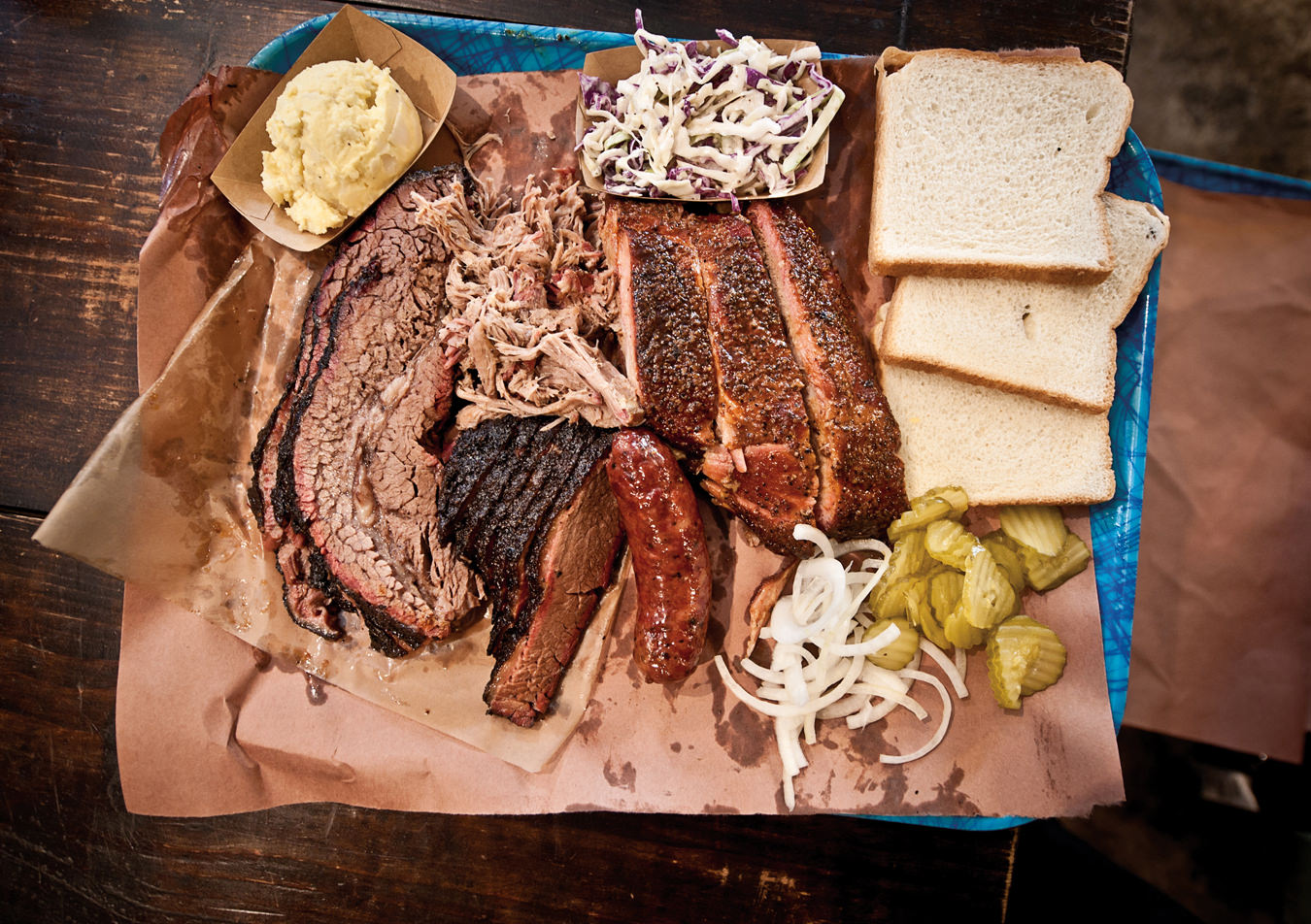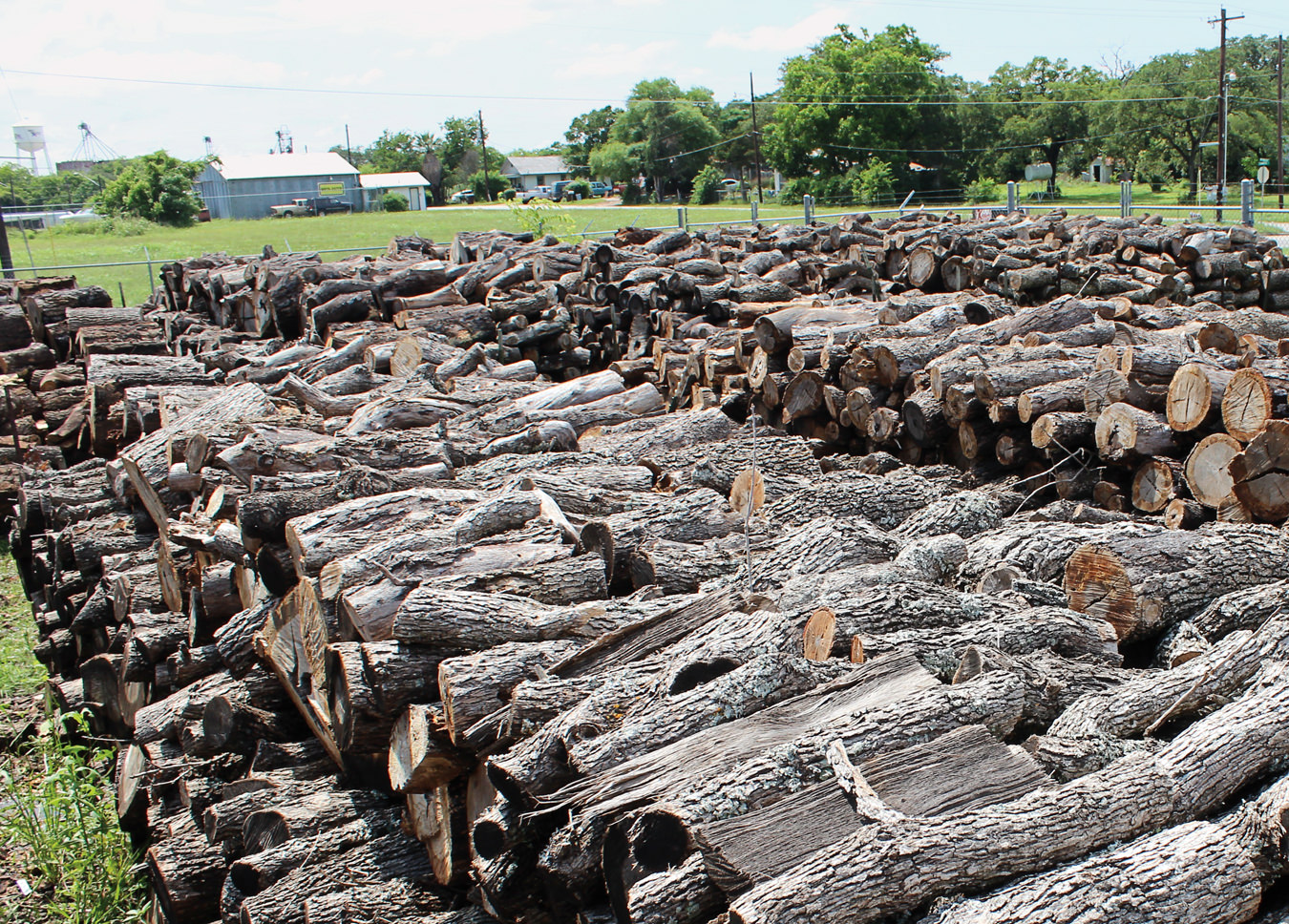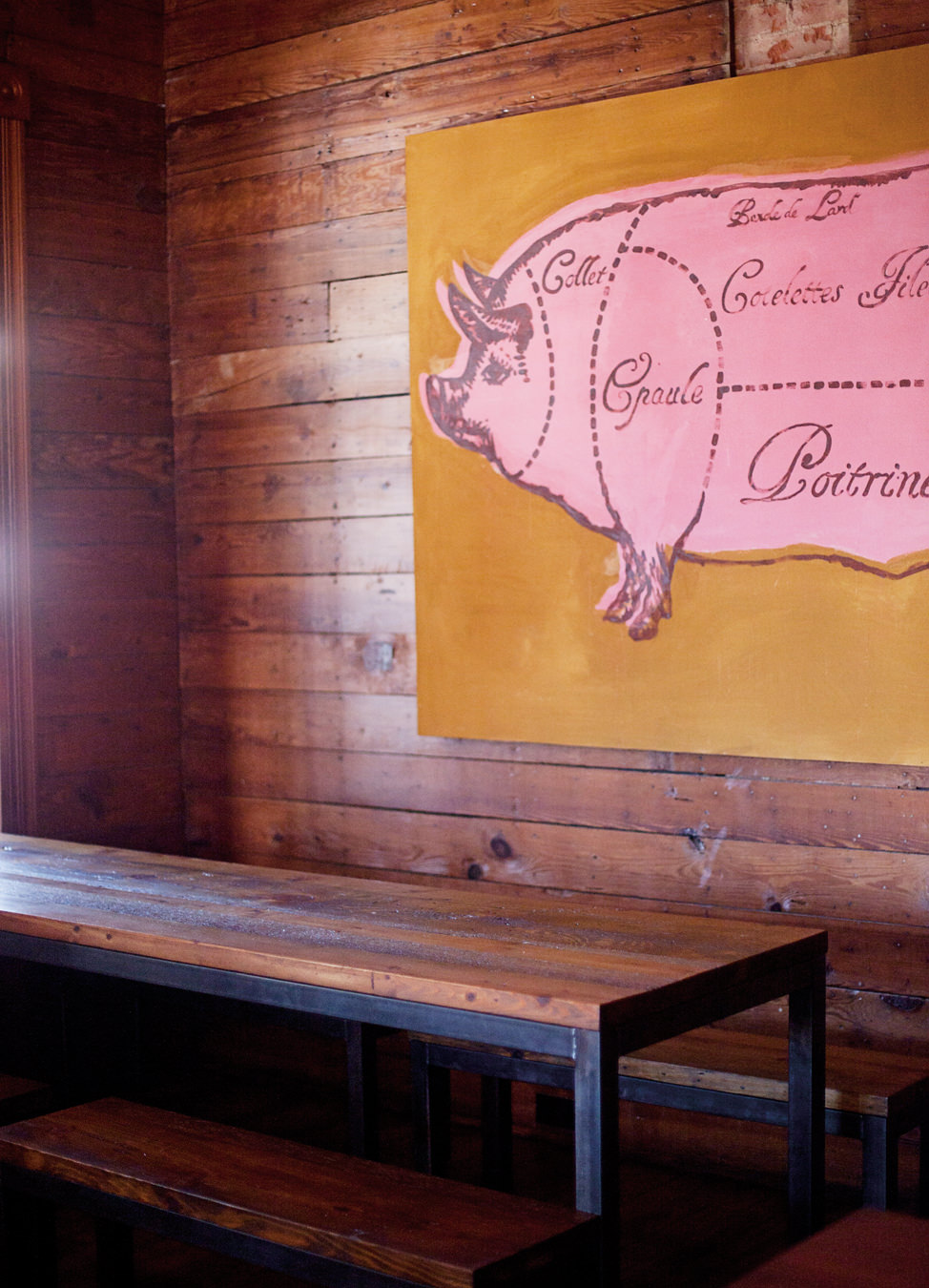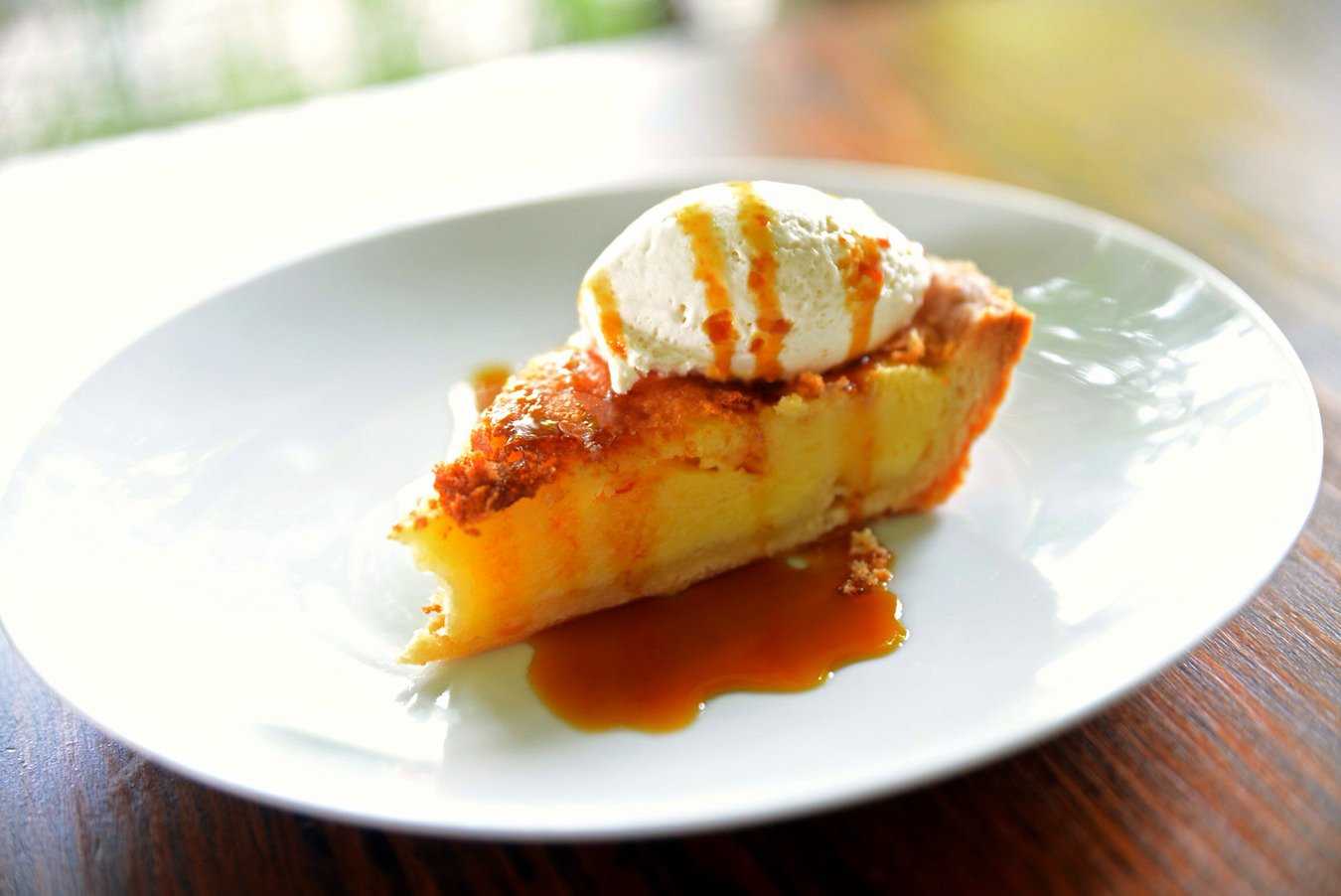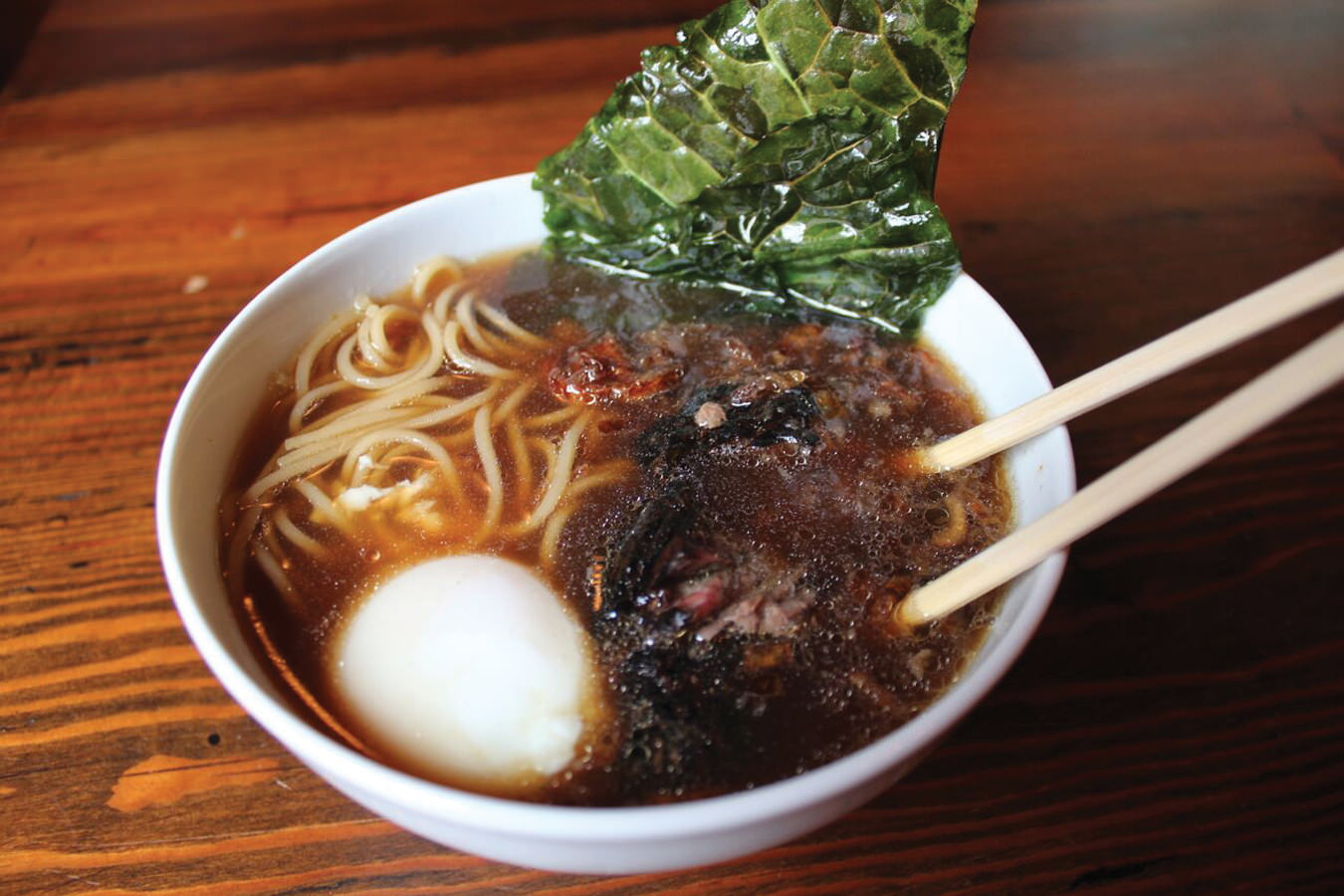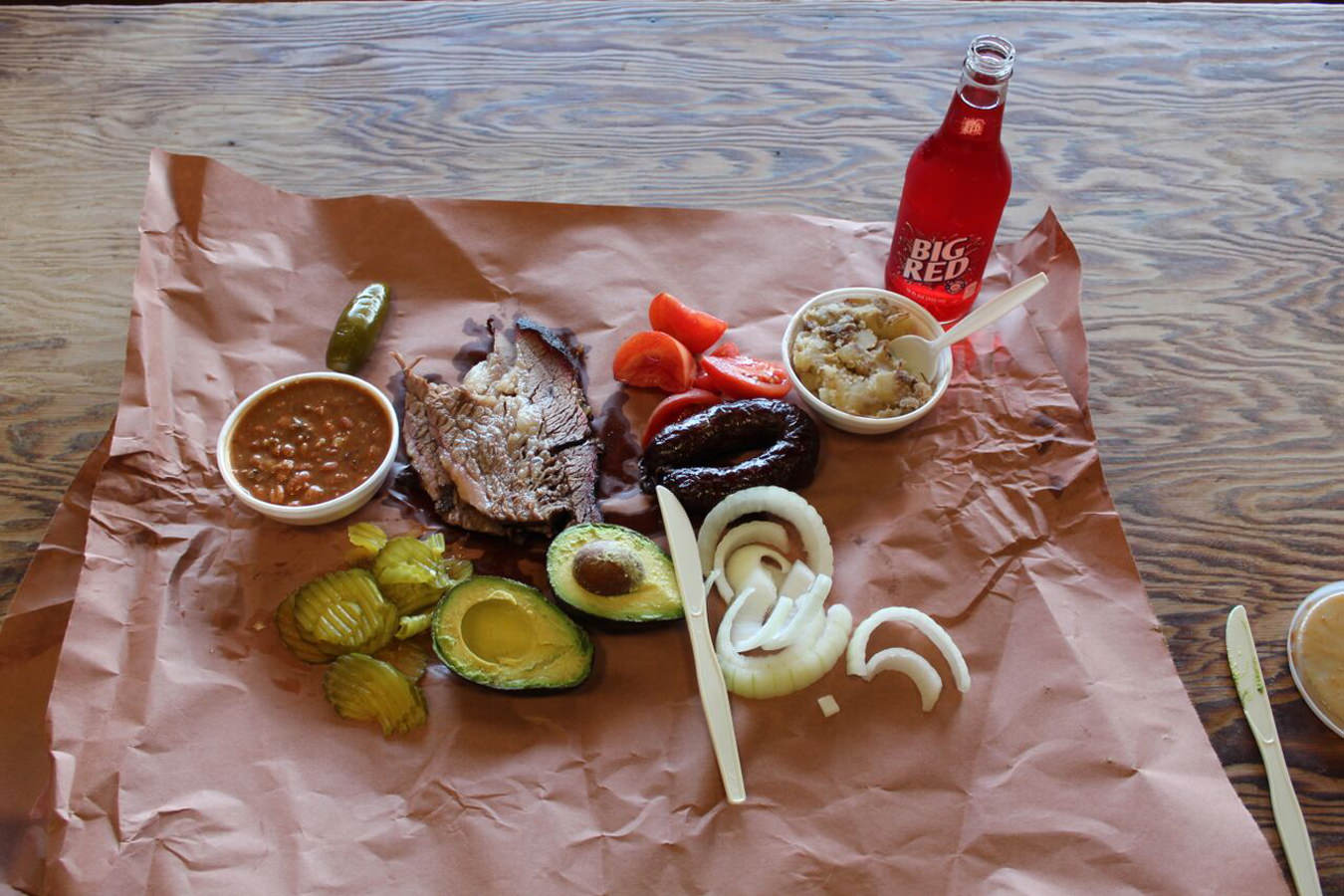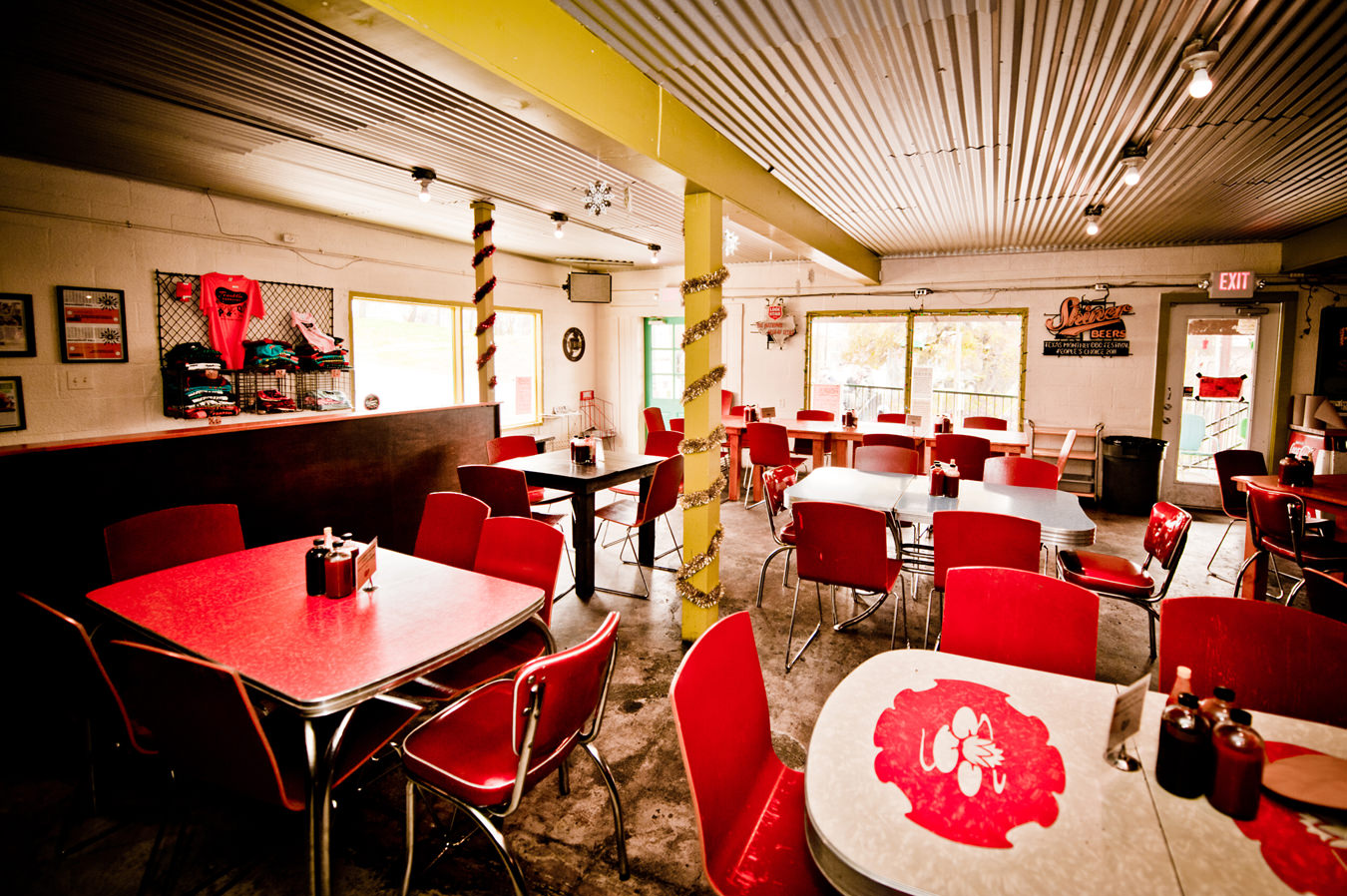What the Champagne region is to wine, Central Texas is to barbecue. With ultra-hip Austin and beautiful, history-steeped San Antonio, the region has long been an international tourist and convention destination. These days, thanks to strong traditions and some young chefs who are playing with fire and smoke in new ways, travellers are starting to come just for the brisket.
In Central Texas, beef brisket is king, and barbecue (not to be confused with the quick-and-dirty grilling we do at home) has been cooked the same way around here for a long time. Authentic Central Texas barbecue can be found at Kreuz Market in Lockhart and Bryan, Southside Market in Elgin, Louie Mueller Barbecue in Taylor, and dozens of other places along what’s become known as the Barbecue Trail.
As in other great food regions, a deep sense of local pride has bred passionate purists who keep the old traditions alive. Classic Central Texas barbecue is simple fare; the rub is mostly good old salt and pepper, with maybe a little cayenne for extra heat. The meat, smoked in wood-fired ovens and sliced to order, is sold by the pound and served on butcher paper and accompanied by unpretentious sides such as pickles, saltines, white bread, beans, and potato salad. Sauce is frowned upon; you wash down your food with a bottle of sweet strawberry soda called Big Red. “There’s a lot of nostalgia tied up in barbecue and barbecue restaurants,” says Marvin Bendele, executive director of Foodways Texas, a non-profit organization dedicated to preserving, promoting, and celebrating the diverse food cultures of the Lone Star State. Bendele likes good food, but when it comes to barbecue restaurants, he says, “I’m interested in the story of the place more than anything.” He’s a cultural historian who contributed to the excellent 2009 book Republic of Barbecue: Stories Beyond the Brisket, which tells the tale of Central Texas barbecue through the voices of the region’s players.
As in other great food regions, a deep sense of local pride has bred passionate purists who keep the old traditions alive.
The book also documents turn-of-the-20th-century Central Texas barbecue culture with articles that explore the larger history of barbecue. A major influence on Central Texas barbecue came from German and Czech immigrants, who flooded into the state beginning in the mid-1800s, with brick ovens built to smoke meat. Things have changed slowly in the barbecue business over the years, and all that tradition doesn’t leave much room for innovation. But in late 2009, upstart 30-something pitmaster Aaron Franklin started offering take-out barbecue in an Austin parking lot. Just one year after it opened, Franklin Barbecue was named as the best barbecue place in America by Bon Appetit, and in 2013, was named the best barbecue joint in Texas by Texas Monthly. Franklin made his mark by offering the highest quality ingredients possible, prepared with passionate and meticulous attention to detail. He’s also bucked tradition by pairing brisket with an espresso-based sauce and offering options that were rarely seen on Central Texas barbecue menus, such as Southern-style pulled pork. The food’s immense popularity allowed Franklin to open a full-fledged restaurant in 2011.
While Franklin was raising the barbecue bar in Austin, Chris Conger began making some disruptive blue smoke of his own in San Antonio. In 2010, he and his wife Kate set up a food truck, the Smoke Shack, and it was a hit right from the start. The Congers spent their university years in Mississippi, and the Smoke Shack’s menu is heavily influenced by the barbecue and comfort foods of the American South. Conger’s ribs are coated with a glaze made with brown sugar, molasses, and butter; his moist, tangy pulled pork sandwich is dressed with a mustard barbecue sauce. Sides include mac ‘n cheese, fried okra, and potato salad, and the coleslaw gets an extra kick from crumbled feta.
The Smoke Shack’s menu might not sound revolutionary to non-Texans, but it represents a big break from tradition, and, what’s more, it’s been embraced by local restaurant-goers and critics alike. In 2013, the Smoke Shack was voted best barbecue in San Antonio, a big accolade for a little food truck. After four years, Conger graduated from food truck operator to full-fledged restaurant owner, and the Smoke Shack’s fan base continues to grow.
Thanks to the likes of local influencers including Franklin Barbecue and the Smoke Shack, the stage was set for someone to turn Central Texas barbecue on its ear. Enter chef Tim Rattray, co-owner of The Granary ‘Cue & Brew in San Antonio’s Pearl district, a new culinary and shopping destination built on the expansive grounds of the famous but now-defunct Pearl Brewery. To look at the chalkboard lunch menu at The Granary, you’d think you were on the Barbecue Trail: brisket, hot links, pickles, white bread. But come by for dinner and you’ll find mesquite-charred foie gras with rhubarb gastrique, smoked pork belly glazed with a sweet tea reduction and, of all things, brisket ramen.
It’s an approach both retro and futuristic. Out back of the restaurant is an old-school wood-burning barbecue pit filled with clods, whole shoulders of beef that would not have been out of place in the 1850s. Yet in the kitchen, there’s a dehydrator, sous vide machine, and a store of liquid nitrogen. This is where barbecue meets molecular gastronomy, and The Granary has built a loyal local following as well as a growing stream of international tourists. Over the years, barbecue has become, as food scholar John T. Edge puts it in Republic of Barbecue, “one of our great American folk foods, a vernacular cultural creation worthy of intellectual energy and acuity.” Marvin Bendele’s bloodline goes back to farmers who came to Central Texas from Alsace-Lorraine, and his father and grandfather had smokers made from old propane tanks. Bendele sees Central Texas chefs who are taking barbecue in new directions as an interesting development, and mentions The Granary’s Tim Rattray, who often features house-made pastrami on his menu. “Can you call it Central Texas barbecue?” Bendele asks. And answers: “I think you can.”


